Climate change: 'Not enough resilient woodland' in NI
- Published
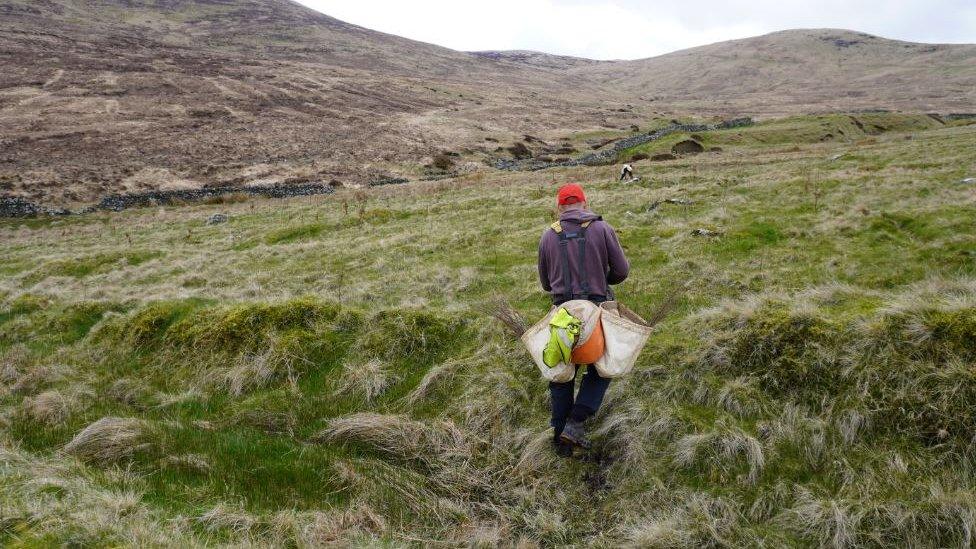
NI Water is planting 14,000 trees in the Mourne mountains
Not enough is being done to create resilient woodland that can help with the response to climate change, according to a report on the state of the UK's trees.
Northern Ireland has the lowest density of woodland in Europe and is well behind the UK average.
Just 8% of land in Northern Ireland is forest, compared with 13% in Britain.
Northern Ireland also has the lowest levels of accessible woodland in the UK.
That means fewer people in Northern Ireland live close to a sizeable forest they can walk in than in other parts of the UK.
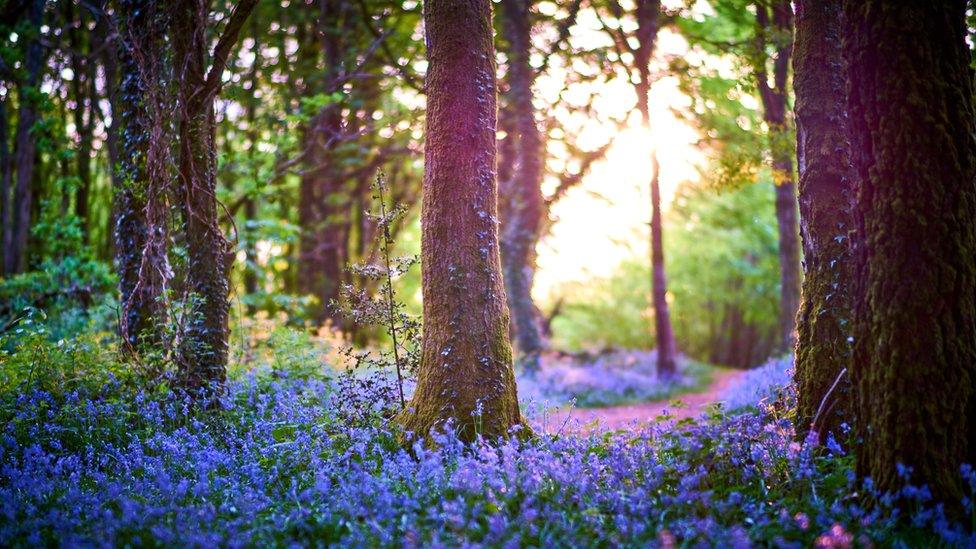
Invasive species, disease and pollution are threats to woodland in the UK
Only about 200 to 300 hectares of new trees are planted a year in Northern Ireland.
A UK climate advisory body has said the rate needs to increase at least threefold to help the UK hit wider targets.
'Woodland on landscape scale'
The Woodland Trust said even greater ambition, of up to 2,000 hectares a year, is required to meet a Northern Ireland target of 12% tree cover by 2050.
"We need to start creating woodland on a landscape scale in order to reach our targets," said its Northern Ireland director Ian McCurley.
Across the UK, woodland is under threat from invasive species, disease and pollution.
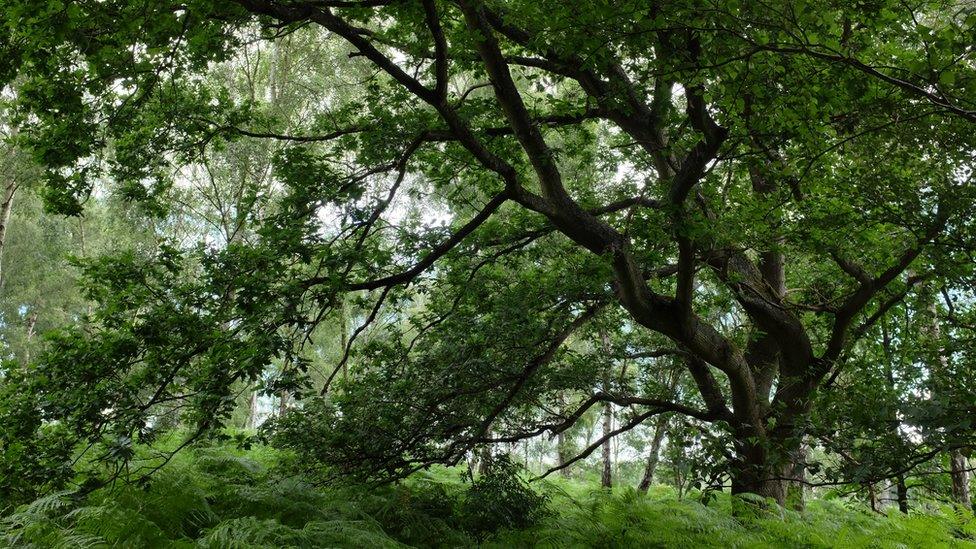
Northern Ireland has the lowest levels of accessible woodland in the UK
And while more trees are being planted across the UK, many of them are non-native and woodland wildlife is still decreasing.
Stormont's Environment Minister Edwin Poots said he would "continue to seek opportunities and work with partners, to plant as many trees as possible across the region to ensure we play our part in tackling climate change".
In March 2020, Mr Poots announced plans to plant 18 million trees in Northern Ireland by 2030 and some of that planting has already taken place.
Since the Forests for Our Future programme was announced in March 2020, about 670,000 trees have been planted, the bulk of them native species like oak, birch, alder and hazel.
Farmers have been offered grants to plant up small areas of their farms with native trees and public bodies and councils have been asked to identify land suitable for planting.
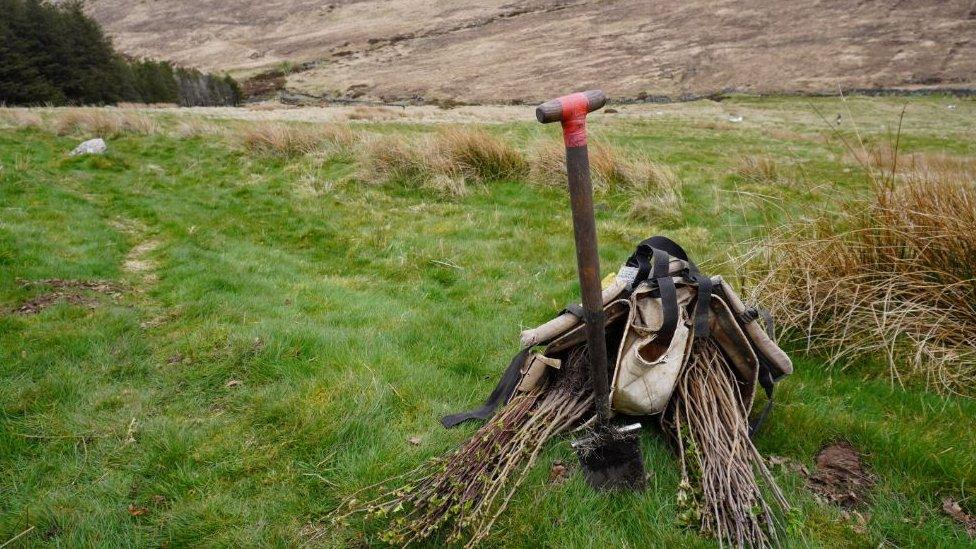
The tree-planting project in the Mournes is one of a number of such projects by public bodies
Despite the progress there are still real problems.
Just 1% of protected woodland in Northern Ireland is in favourable condition. The biggest challenges are alien species like rhododendron which was found at nearly a quarter of sites.
Nitrogen deposition is another big issue.
According to the Woodland Trust 96% of all woodlands in Northern Ireland exceeded critical levels of nitrogen.
It said the priorities were to plant more trees, address the problem of invasive species, vastly improve the data on trees outside forests and properly assess the state of protected woodlands.
- Published25 November 2020
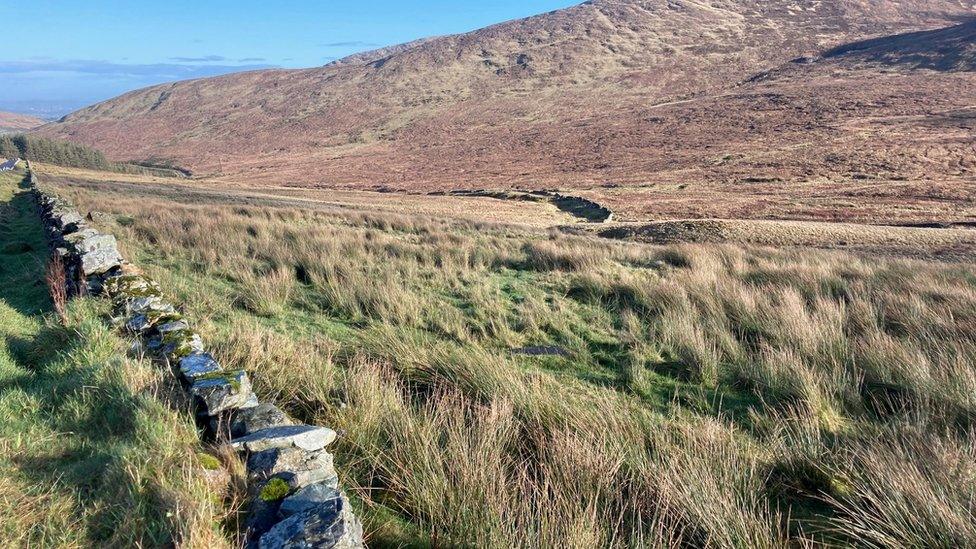
- Published22 January 2020

- Published2 March 2020
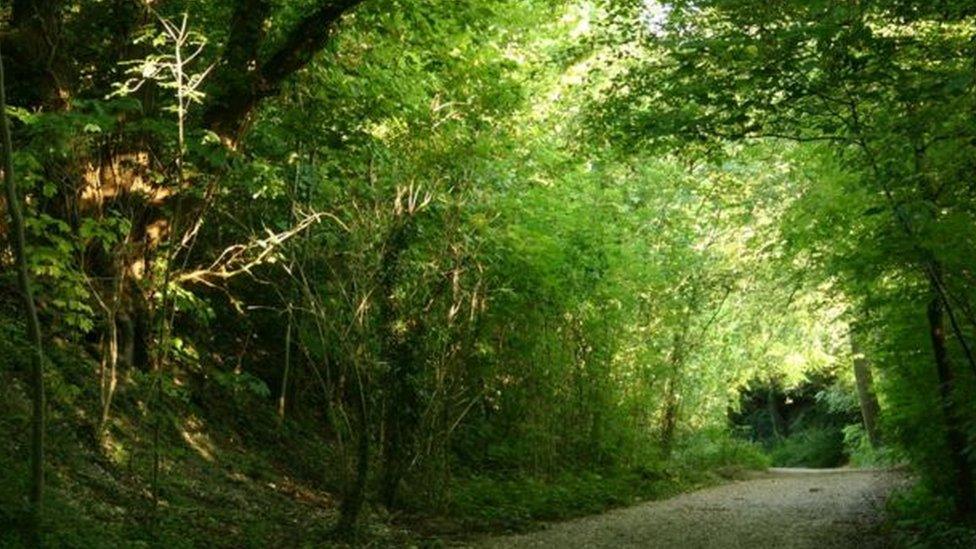
- Published18 February 2021
